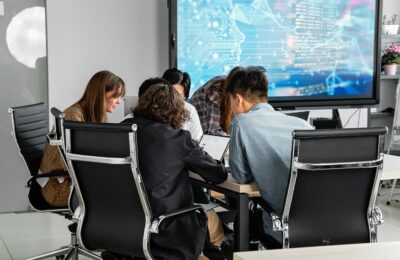Staying hydrated is a cornerstone of good health, but maintaining the right temperature for your drinks…
The Evolution of Modern Office Table: A Blend of Style and Functionality
Introduction to Modern Office Table
In the ever-evolving landscape of contemporary workplaces, the design and functionality of office furniture play a pivotal role in creating an environment that fosters productivity and innovation. Among the essential elements, the modern office table stands out as a symbol of the changing dynamics of workspaces. Gone are the days of monotonous, utilitarian desks; today’s office tables seamlessly blend style with functionality to cater to the diverse needs of a modern workforce.
Ergonomics and Employee Well-being
One of the primary considerations in the design of modern office tables is the emphasis on ergonomics. Employers and designers now recognize the importance of creating workspaces that prioritize employee well-being. Ergonomically designed tables are adjustable, accommodating various working preferences and promoting a healthier work posture. This shift towards ergonomic consciousness not only enhances employee comfort but also contributes to increased productivity and reduced instances of work-related injuries.
Versatility and Collaboration
The nature of work has transformed significantly in recent years, moving away from individual-centric tasks to collaborative endeavors. Modern office tables reflect this shift by embracing versatile designs that facilitate teamwork and communication. Circular and modular tables have become increasingly popular, providing flexibility in configuring collaborative workspaces. These tables often feature integrated power outlets and technology-friendly designs to support the seamless integration of electronic devices, fostering a collaborative and tech-savvy work environment.
Aesthetics and Brand Identity
Beyond functionality, modern office tables contribute to the overall aesthetics of the workspace. Companies recognize the impact of a well-designed office in creating a positive and professional image. As a result, office table now come in a myriad of designs, materials, and finishes, allowing businesses to align their furniture with their brand identity. Sleek and minimalist tables convey a sense of modernity, while wooden or textured surfaces add warmth and sophistication. This focus on aesthetics extends beyond the boardroom, permeating through open workspaces and private offices alike.
Adapting to Remote Work Trends
The rise of remote work has had a profound influence on the design of modern office tables. As businesses embrace hybrid work models, the need for versatile and adaptable furniture has become paramount. Folding tables, portable workstations, and convertible desks have gained popularity, allowing employees to create functional workspaces at home. Modern office tables designed to seamlessly transition between the traditional office setting and the home environment, ensuring a cohesive and productive work experience regardless of location.
Sustainable Practices
In an era marked by increased environmental awareness, sustainability has become a key consideration in the design and manufacturing of office furniture, including tables. Modern office tables often incorporate sustainable materials such as recycled wood, bamboo, or eco-friendly laminates. Additionally, many manufacturers prioritize eco-friendly production processes, reducing waste and minimizing the environmental impact. This commitment to sustainability not only aligns with corporate social responsibility but also resonates with employees who value environmentally conscious practices.
Employee Well-being and Productivity
The design of modern office tables goes beyond mere aesthetics and functionality; it actively contributes to employee well-being and productivity. Adjustable height desks, for example, allow employees to switch between sitting and standing positions, reducing the risks associated with prolonged sitting. Ergonomically designed chairs and tables promote good posture, minimizing the likelihood of musculoskeletal issues. By prioritizing the physical comfort and health of employees, modern office tables contribute to a more engaged and productive workforce.
Customization for Individual Preferences
Recognizing that each employee has unique preferences and work styles, modern office tables are increasingly designed with customization in mind. Employees can choose from a variety of table shapes,
Collaboration Zones and Open Workspaces
The traditional cubicle-based office layout is giving way to open workspaces and collaboration zones, and modern office tables play a central role in this transition. Large communal tables and shared workstations are strategically placed to encourage spontaneous interactions and teamwork. These collaboration zones are often equipped with whiteboards, digital screens, and other tools to facilitate brainstorming and idea sharing. The design of these spaces reflects a cultural shift towards fostering a sense of community and innovation within the workplace.
Conclusion
The modern office table is a microcosm of the dynamic changes occurring in contemporary workplaces. It not only serves as a functional piece of furniture but also plays a crucial role in shaping the culture, identity, and efficiency of an organization. From ergonomic considerations to sustainable practices, from aesthetic appeal to technological integration, the evolution of office tables mirrors the evolving nature of work itself. As the line between traditional and remote work continues to blur, the adaptability and versatility of modern office tables position them as key components in creating workspaces that inspire creativity, collaboration, and employee well-being.





This Post Has 0 Comments